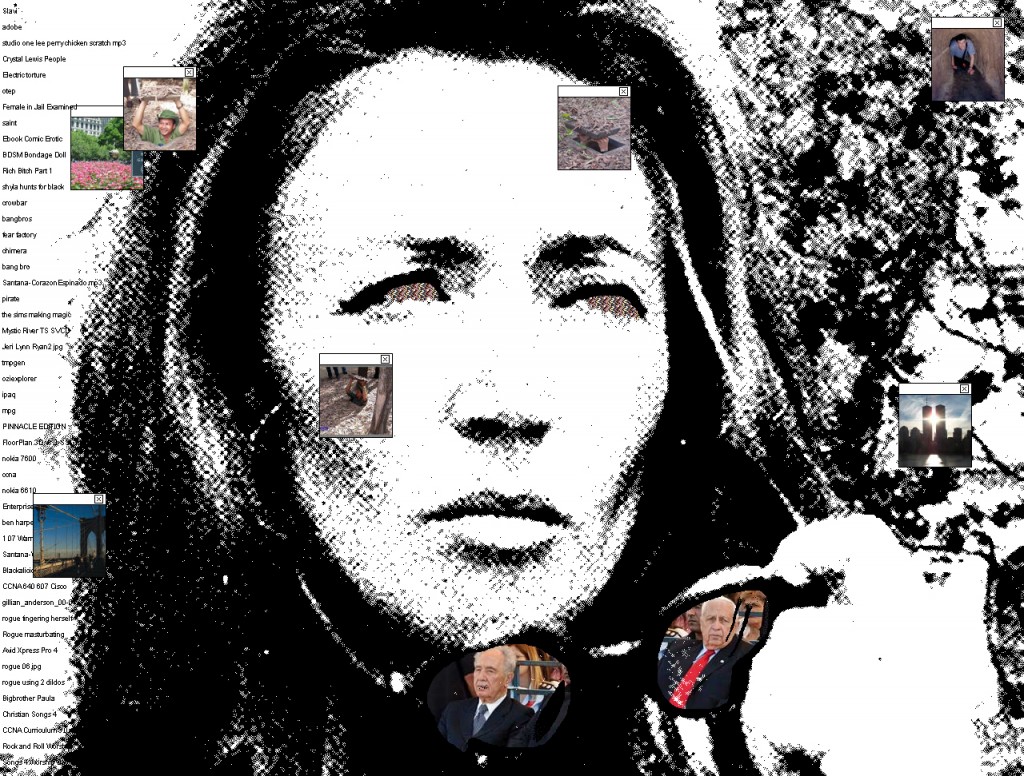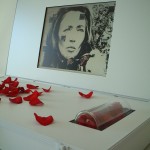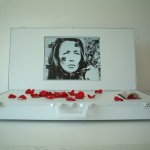Above: video documentation of Altarboy Oriana. The project premiered at The Passage of Mirage a show held at the Chelsea Art Museum in New York curated by Christiane Paul and Zhang Ga Altarboy is a portable server-sculpture containing a network based art work that can be sold. The sculpture contains a laptop running as web server. This means that “physically” the code of the work resides in the sculpture and can be owned by a collector or an institution as any other more classic artwork. Indeed, it is up to the collector to decide when to plug it into the web letting the public see and interact with it at a proper website (website becoming visible when the sculpture is connected to the Internet). If the server is turned off, the work can be seen privately using the data stored in its database (data collected during the days of its online activity).
The Oriana sculpture (part of Carlo Zanni’s series Altarboy) consists of a customized, portable aluminum case. The bottom shell contains a laptop running as web server (oriana.us) and a little transparent glass box with fresh rose petals, pointing to the ephemeral nature of the object. The sheet itself is also covered by fresh rose petals. Embedded in the top shell is a 17″ LCD screen showing a portrait of writer and journalist Oriana Fallaci. The pupils of her eyes consist of images gathered through live search engine queries; the images returned by the query are resized as 1×1 pixels and linked to a thumbnail of the same image (images are being refreshed every 90 seconds). Users remotely interact with the piece and launch the images in the pupils at the website oriana.us. The right pupil of the portrait is filled with images that users gather through queries at the webiste. The left pupil of the portrait is filled with images that are the result of a query for the words “Cu Chi” on the Google search engine. The Cu Chi tunnels were one of the most famous battlegrounds of the Vietnam War and are one of the country’s prime tourist attractions today. Fallaci wrote about the Vietnam war, most notably in her Vietnam journal Nothing, and So Be It . In the image, she is taking off a pair of glasses. The images filling the lenses come from the cover image of CNN.com. Oriana constructs a physical object and portrait as a “living process” that contains a multitude of other possible portraits and takes its shape through the choices of users in a real-time networked process.
Code by Carlo Giordano






